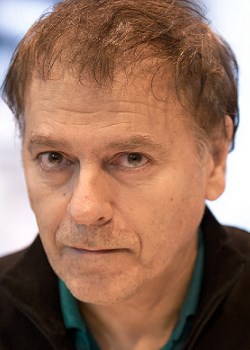Enki Bilal

Enki Bilal, the son of a Czech mother and a Bosnian father, spent the first nine years of his life in Belgrade, where the ghost of World War II still haunted everyday life. The Bilal family moved to Paris in 1961, where Enki Bilal was drawn to comics and cinema. He started at Pilote in 1972, making illustrations, covers and short stories. Three years later, Bilal met writer Pierre Christin, with whom he created several comics by combining comic strips with photos, including 'Légendes d'Aujourd'hui', 'La Croisière des Oubliés' and 'Partie de Chasse'.
In 1980 he began his award-winning 'Nikopol-trilogy', including the books 'La Foire aux Immortels', 'La Femme Piège' and 'Froid Équateur'. Besides these comics activities, Enki Bilal started working in film, theater and opera. He created sets, costumes and posters for a theater play and worked on two feature films.
Apart from these and other occupations, like photo retouching and glass painting, Bilal published 'Le Sommeil du Monstre', the first installment in his Hatzfeld tetralogy, in 1998. He published the last volume of this series about the the breakup of Yugoslavia from a future viewpoint, in 2007.
Bilal's stories are set in a magically orientated but realistic future after the Yugoslavian civil wars, giving Bilal the perfect setting against which to illustrate his fears. He further reinforces his views by his dark and shadowy style of drawing, in which color features largely for evoking emotions. The result of Enki Bilal's efforts is a growing catalog of intense and atmospheric graphic novels. Bilal's cinematic career was revived with the expensive 'Immortel (Ad Vitam)', his first attempt to adapt his books to the screen.
Enki Bilal was named Officier des Arts et des Lettres in 2003, and he was invested with a knighthood in the Ordre National du Mérite in 2010. As asteroid was named after him in 2006.
